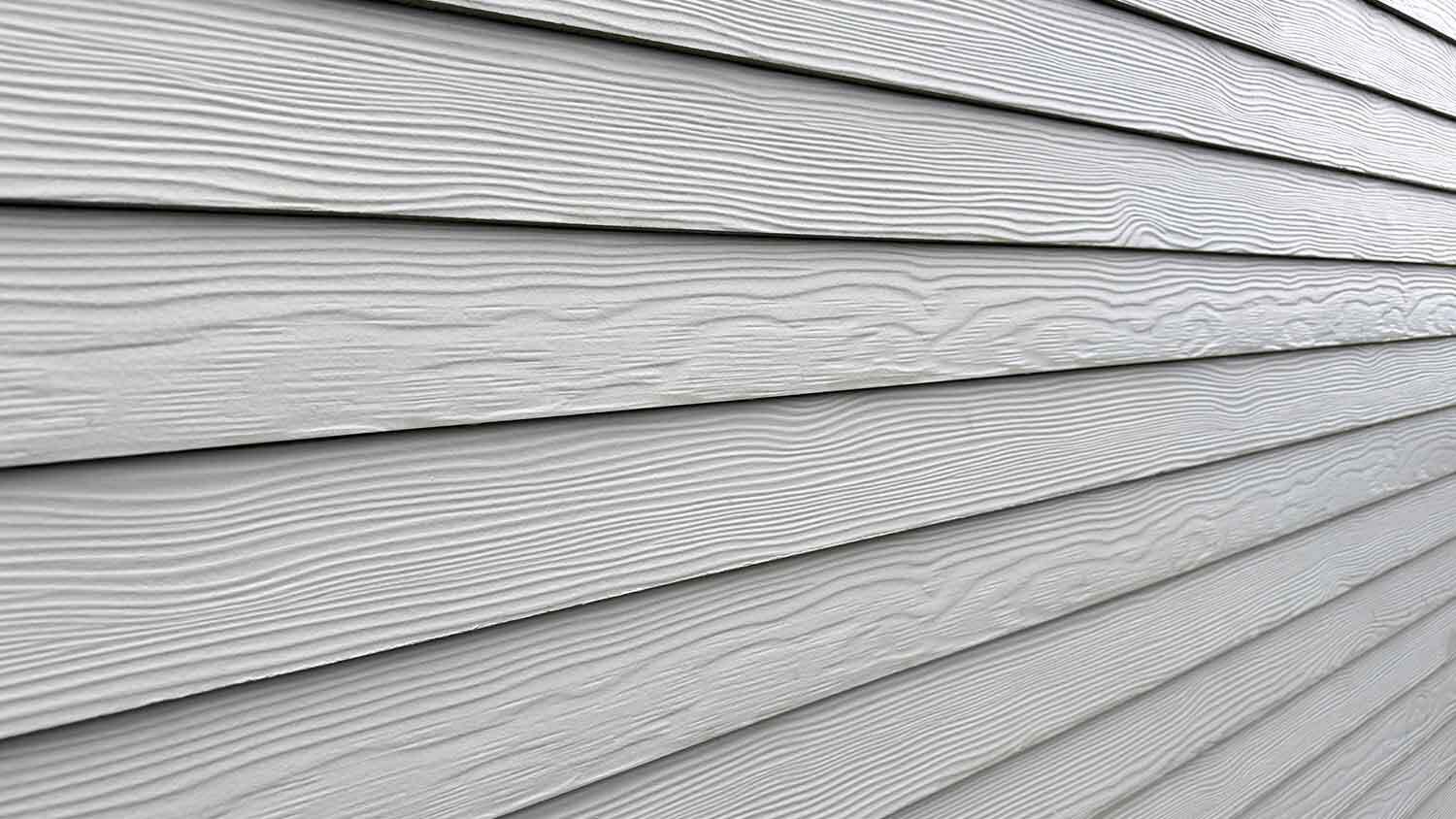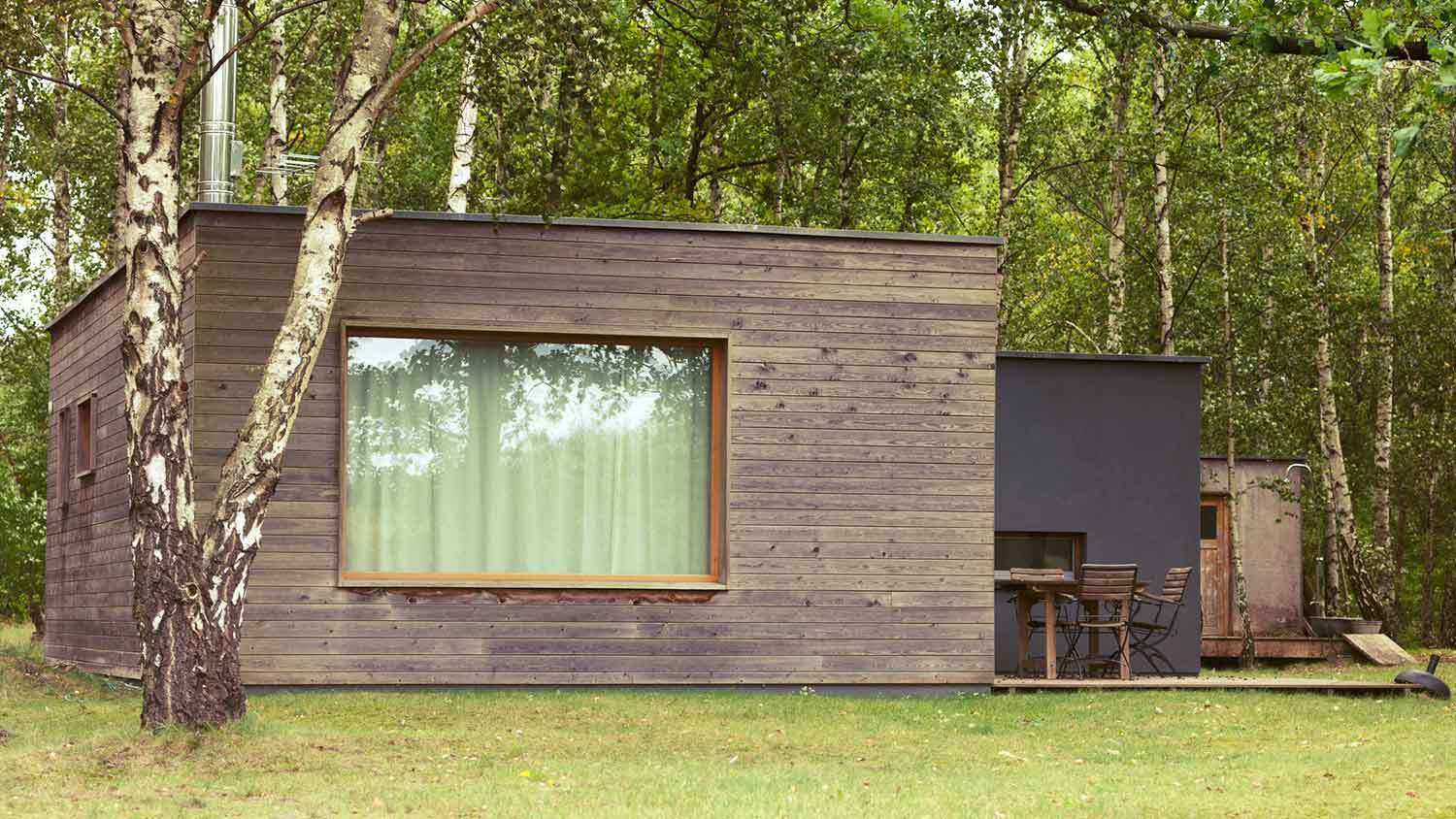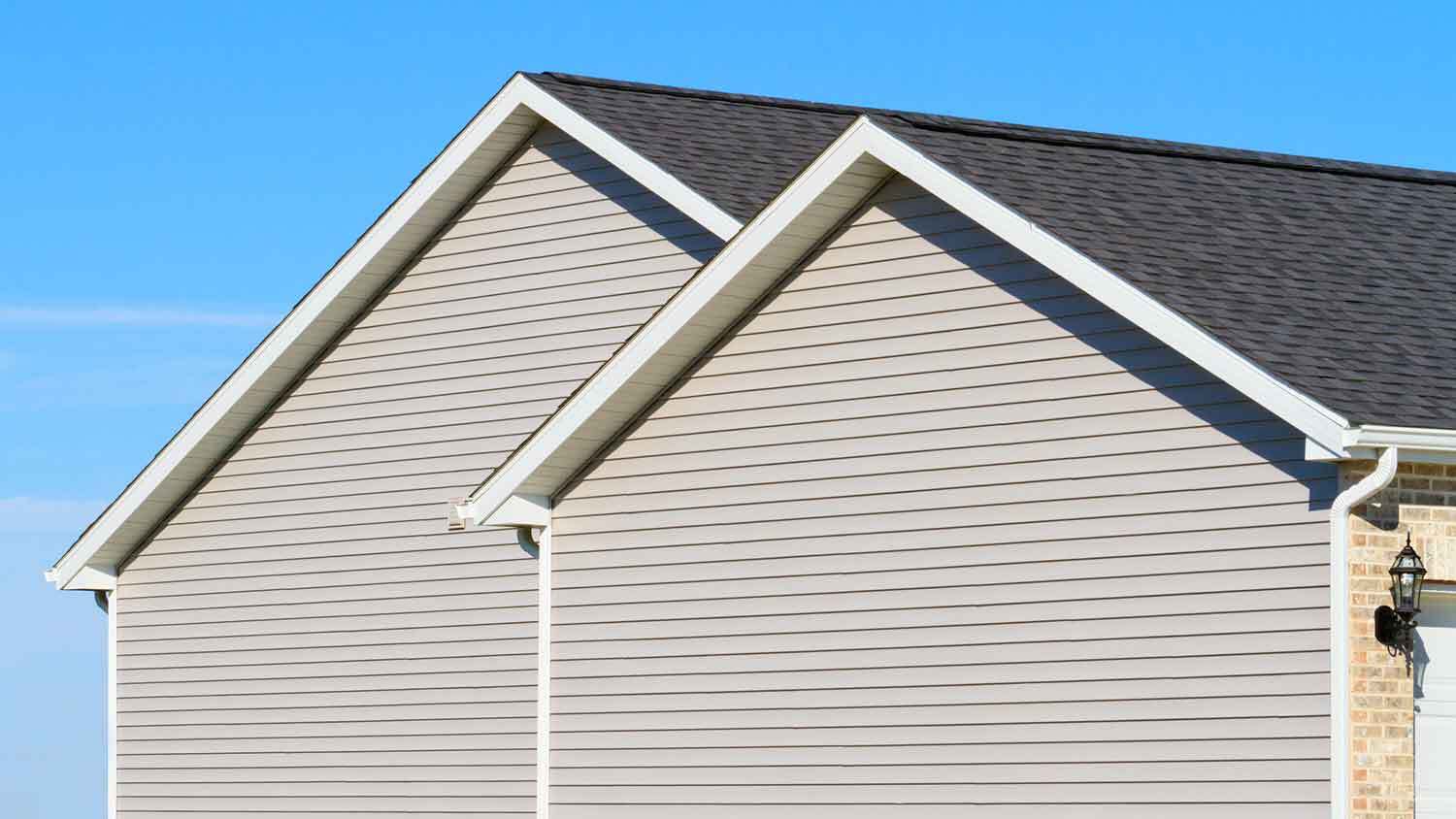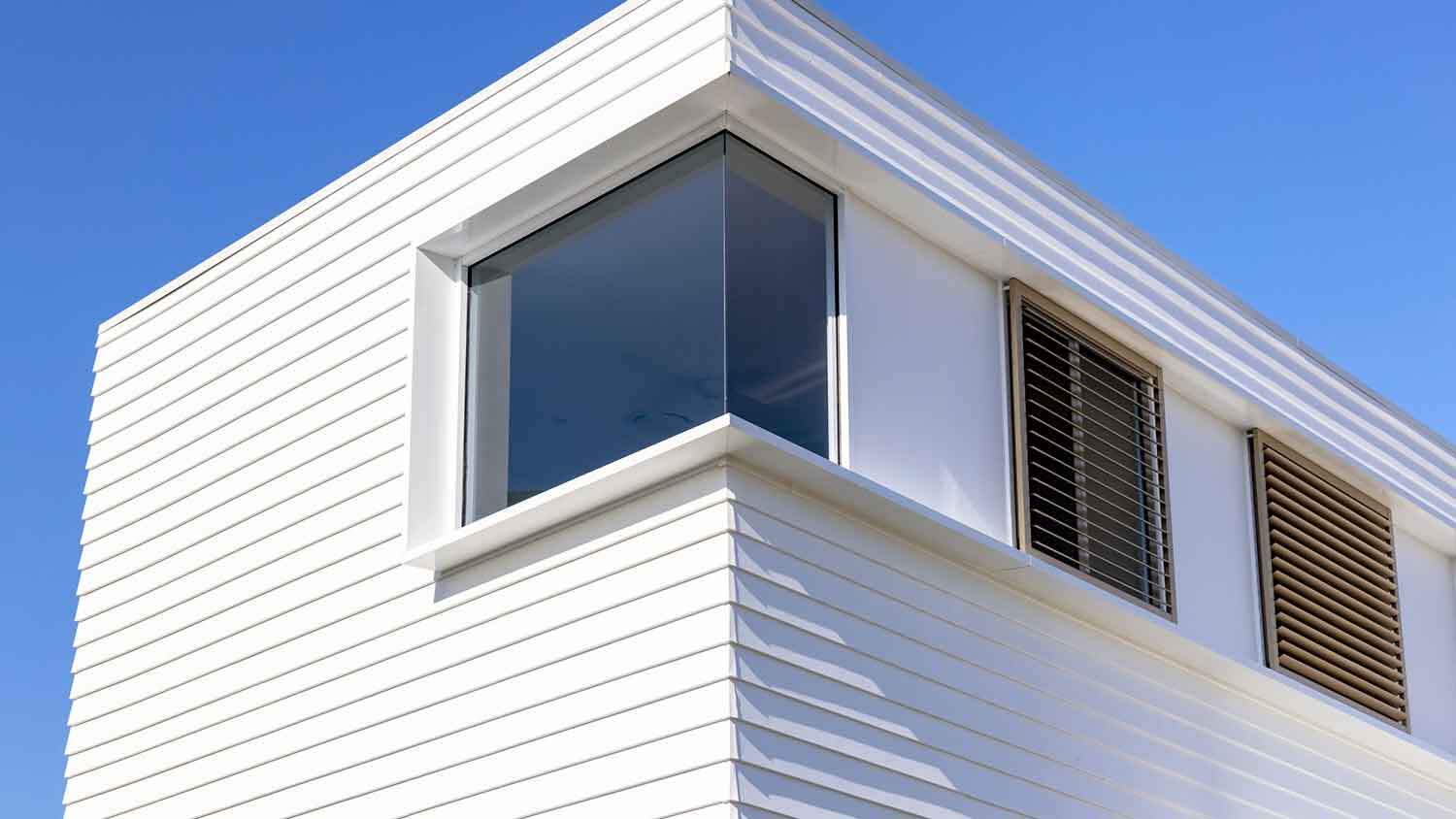
The cost of siding repair varies depending on material, design, and damage. This helpful guide covers the siding repair costs to expect in Columbus, Ohio.
You’ll be “clad” you did your research before installing new cladding


Unlike traditional siding, cladding consists of a multi-layered exterior system that controls insulation, moisture, and airflow. Cladding is available in a range of materials, each with its own benefits and drawbacks. Our guide explores seven types of cladding—fiber cement, wood, vinyl, composite, brick, stone, and metal—so you can choose the right one for your home.
| Material | Average Cost per Sq. Ft. |
|---|---|
| Fiber Cement | $6–$17 |
| Wood | $5–$25 |
| Vinyl | $3–$16 |
| Composite | $8–$18 |
| Brick | $10–$25 |
| Stone | $15–$30 |
| Metal | $5–$30 |

Fiber cement cladding or siding is made from a mixture of sand, cement, water, and cellulose fibers, creating a durable and long-lasting material that stands up to the elements. Fiber cement cladding can look like wood, stone, stucco, and other materials but requires much less maintenance. This cladding can last up to 50 years with minimal upkeep beyond annual cleaning.
| Pros | Cons |
|---|---|
| Low-maintenance | Heavy material |
| Can mimic other materials | Complex installation |
| Long-lasting | Moisture and mold concerns |
Best for: Homes in coastal areas, homes in areas that experience a wide range of weather

Wood cladding was one of the most popular exterior choices until the last half of the 20th century, when vinyl and other synthetic options became more widely available. Wood is an eco-friendly cladding choice and offers a classic aesthetic that many homeowners prefer.
Before installing wood cladding, be sure you’re up to the maintenance—it’ll need regular cleaning, painting or sealing, and repairs to avoid moisture damage, rot, mold growth, and other issues.
| Pros | Cons |
|---|---|
| Eco-friendly | High maintenance |
| Classic aesthetics | Prone to rot and moisture issues |
| Durable when maintained properly | Expensive |
Best for: Homeowners who prefer sustainable materials

Budget-friendly vinyl is the most common cladding material installed in the U.S. today. It’s available in a wide range of colors and patterns, is easy to install, and holds up well in most climates. However, it’s not as long-lasting as other materials and is prone to denting, warping, chipping, and fading.
| Pros | Cons |
|---|---|
| Cost-effective | Shorter lifespan |
| Easy to install | Prone to denting and warping |
| Wide range of style options | Fades over time |
Best for: Budget-conscious homeowners

Composite cladding consists of a combination of wood fibers, plastic, and resin, mimicking the look of wood without the maintenance wood requires. It’s easy to install, offers superior insulation, and is UV- and fire-resistant. It’s less expensive than wood cladding but costs more than vinyl. Composite cladding’s lifespan depends on the quality of the materials it’s made up of and the environmental conditions it’s exposed to.
| Pros | Cons |
|---|---|
| Easy to install | Higher initial cost |
| Good insulator | Variable lifespan |
| Resists fire and UV damage | Prone to impact damage |
Best for: Homeowners who want the look of wood without the maintenance

Classic brick cladding provides a traditional, timeless look to a home’s exterior. This sturdy material requires very little maintenance and is extremely durable, lasting up to 100 years or more. Brick is an excellent insulator, so it may not be ideal for homes in hot climates, but can help keep homes in cold areas warm throughout the winter.
Brick requires expert installation and has a higher up-front cost than other materials. It’s also very heavy and prone to moisture issues if not properly installed.
| Pros | Cons |
|---|---|
| Timeless aesthetics | Difficult to install |
| Superior insulation | High upfront cost |
| Extremely durable | Heavy |
| Very low-maintenance | Susceptible to moisture problems |
Best for: Homes in colder climates, homes that can support the additional weight

If you’re looking for an upscale option for your home’s exterior, the natural beauty of stone cladding will set your home apart from the rest of the block. Stone cladding is available in a range of stone types, finishes, and colors for a customized look. Its beauty comes at a price, though—stone is one of the most expensive cladding materials. It’s also very heavy and may require you to add additional support before installation.
| Pros | Cons |
|---|---|
| Natural aesthetic | Expensive |
| Extensive range of types and finishes | May require reinforcement for weight |
| Fire- and weather-resistant | Difficult to install |
Best for: Homes in areas with extreme weather, homeowners who want a customized, natural look

Metal cladding, most often made from steel or aluminum, offers high resistance to wind and rain, as well as superior fire protection. It’s extremely long-lasting and low-maintenance, and comes in an array of styles and finishes. While metal cladding is quite durable, it is susceptible to impact damage. Installation can be complex and requires expert tools and experience, and metal cladding has a higher initial cost than other materials.
| Pros | Cons |
|---|---|
| Wind- and rain-resistant | Prone to impact damage |
| Low-maintenance | Complex installation |
| Long-lasting | Expensive |
Best for: Barn conversions, areas with regular heavy rain or wind
Choosing the right cladding depends on your budget, your home’s aesthetics, where you live, and your home’s structural requirements. Cladding or siding is a major investment, so it’s worth meeting with a local siding installation and repair pro to discuss your options and see what will work best for your home, as well as the best time to install siding or cladding. Beyond choosing the right material, you also have a wide array of cladding and siding styles to select from, so you can give your home a truly customized look.
Siding materials like vinyl, wood composite, and fiber cement tend to expand and contract quite significantly with changes in temperature and weather. That means they need extra flashings and channels to cover the gaps and keep moisture out so it doesn't expose the wood underneath.
Unless you have experience installing cladding, leave this job to the pros. Hire a siding contractor with experience installing the type of cladding you’ve chosen—each material requires different techniques, tools, and expertise. Improperly installed cladding can lead to moisture damage, structural issues, and even problems with your homeowners insurance. Cladding costs an average of $16,000 to $28,000, so be sure to find an expert who can do the job right.
From average costs to expert advice, get all the answers you need to get your job done.

The cost of siding repair varies depending on material, design, and damage. This helpful guide covers the siding repair costs to expect in Columbus, Ohio.

Fiber cement siding is durable, fire-resistant, and affordable. Learn more about fiber cement installation costs in Columbus, OH.

In addition to protecting against extreme Midwest temperatures, new siding in Columbus adds curb appeal. Learn about siding replacement cost in Columbus.

Learn more about the best types of cement siding and their benefits for your home.

Want to learn how to install vinyl siding on a house? Keep reading for insight into the whole process from start to finish.

In this guide, we break down the strengths and weaknesses of the two most popular materials for home exteriors to help you choose the best one for your needs.